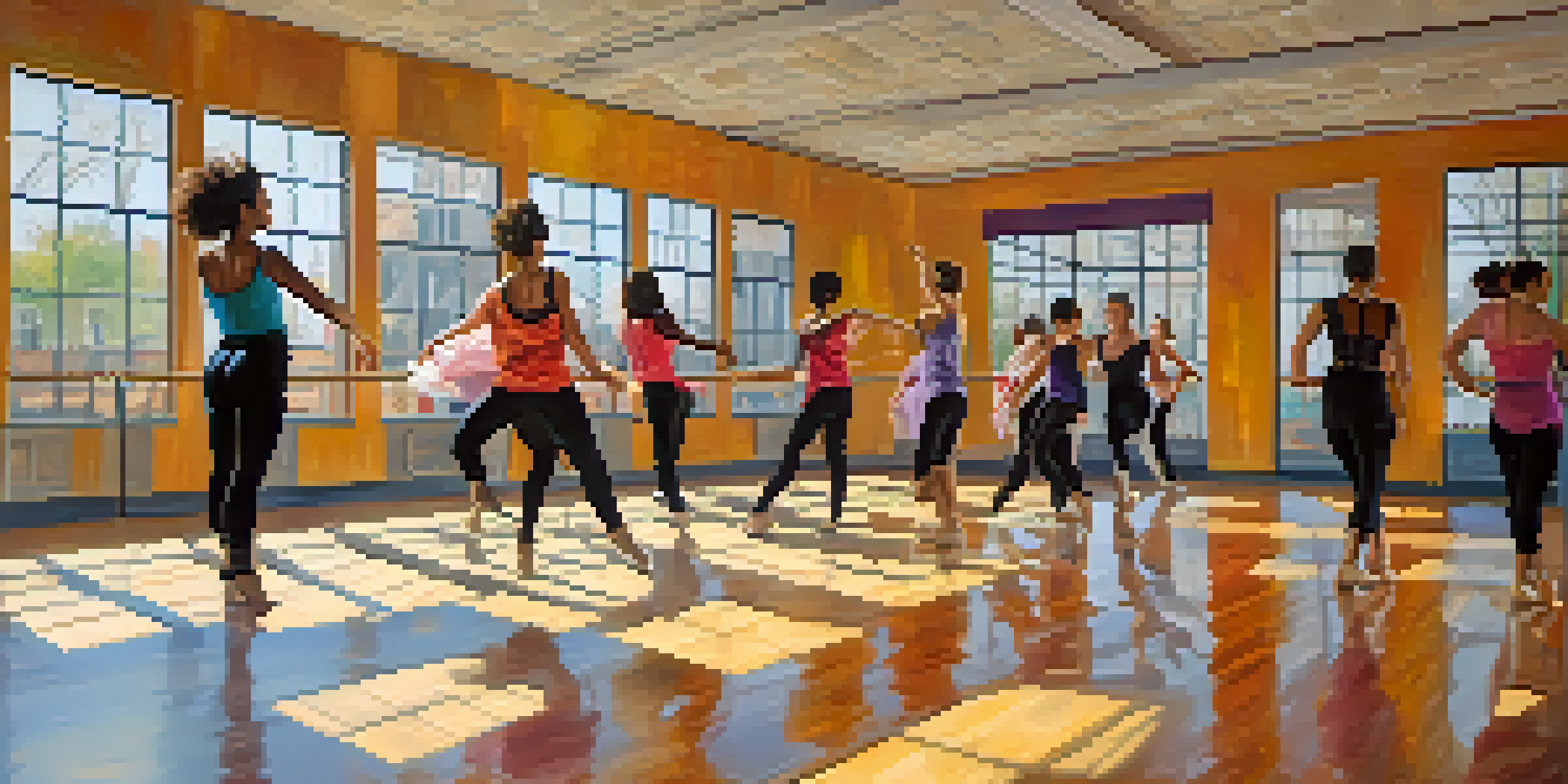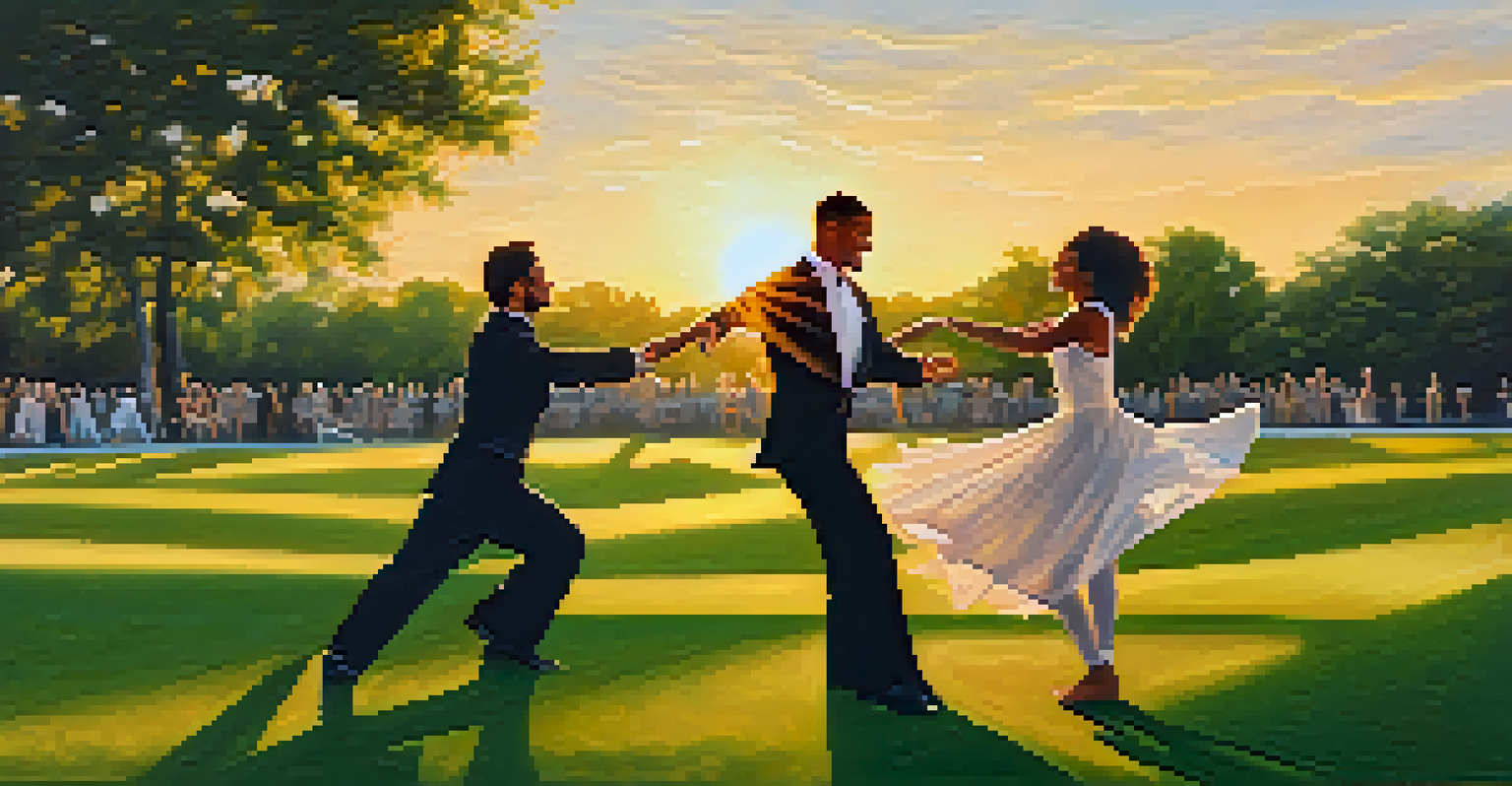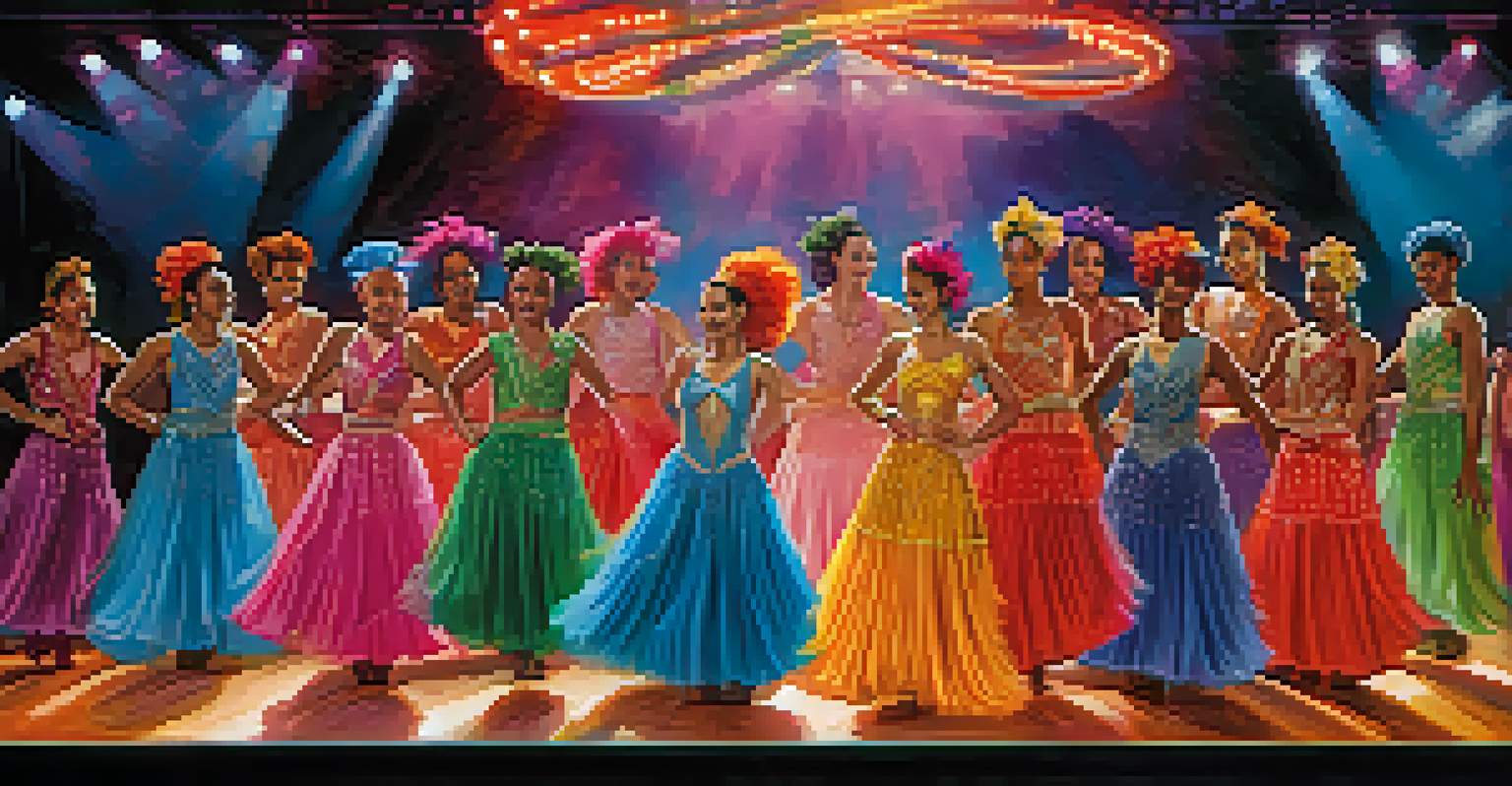Analyzing Gender Representation in Dance Across Media Platforms

Understanding Gender Representation in Dance
Gender representation in dance is a critical topic that reflects broader societal norms. It encompasses how different genders are portrayed in performances, choreography, and teaching roles. Recognizing these representations helps us understand the underlying messages about gender roles and expectations in our culture.
Dance is the hidden language of the soul.
In traditional contexts, dance has often been categorized by gender, with certain styles and movements associated with femininity or masculinity. This binary view can limit the expression and participation of dancers who don't fit neatly into these categories. By analyzing these portrayals, we can challenge stereotypes and push for more inclusive representations.
Moreover, understanding gender representation in dance isn't just about counting numbers; it's about the narratives being told. Are women shown as strong leaders or merely as graceful figures? Are men depicted as nurturing or aggressive? These questions help us delve deeper into the significance of dance as a form of expression and identity.
Historical Context of Gender in Dance
The history of dance reveals a fascinating evolution of gender roles, shaped by cultural, social, and economic factors. In many cultures, historical dance forms often reflected patriarchal norms, with women primarily seen as performers and men as choreographers or directors. This trend created a significant imbalance in representation and opportunity within the dance community.

As the feminist movement gained momentum in the 20th century, more women began to challenge these traditional roles. They fought for greater visibility and opportunities in various dance genres, from ballet to contemporary. This shift not only impacted the performers but also influenced the way dance was consumed and appreciated by audiences.
Challenging Gender Stereotypes
Gender representation in dance challenges traditional norms, encouraging a more inclusive portrayal of all identities.
Today, we see the results of these historical changes, with many female choreographers and dancers breaking barriers. This progress invites a re-examination of past representations and encourages ongoing discussions about gender equality in dance.
Gender Representation in Dance Films
Dance films have a unique power to shape perceptions of gender through visual storytelling. The portrayal of male and female dancers in these films often mirrors societal expectations, impacting how audiences perceive gender roles. For instance, many dance films depict women as romantic interests or support characters, while men often take on the heroic or leading roles.
In dance, as in life, the more you embrace your individuality, the more you can connect with others.
However, recent dance films have started to challenge these conventions by showcasing strong, complex female characters and offering men roles that embrace vulnerability. This shift not only enriches the narrative but also allows for a more nuanced exploration of gender identity. By breaking free from traditional tropes, filmmakers can create stories that resonate more deeply with diverse audiences.
It's essential for viewers to critically engage with dance films, recognizing the implications of these representations. By doing so, audiences can advocate for more balanced portrayals that reflect the realities and complexities of all genders in dance.
Social Media's Role in Dance Gender Representation
In today's digital age, social media platforms have transformed how dance is shared and experienced. Dancers of all genders can now showcase their talent and creativity, leading to a more diverse representation in the dance community. This democratization of dance has empowered many to express their identities and challenge traditional norms.
For example, platforms like Instagram and TikTok have given rise to a new generation of dancers who defy gender stereotypes through their performances. By engaging with different styles and collaborating across genres, these dancers often create content that celebrates fluidity and inclusivity. This shift promotes a broader understanding of gender expression beyond the binary.
Impact of Social Media
Social media platforms empower dancers to express their creativity and challenge gender stereotypes, promoting diversity in the dance community.
However, it's essential to acknowledge that social media can also perpetuate stereotypes. The pressure to conform to popular trends can overshadow authentic representation. Therefore, fostering a culture that values individuality and diversity in dance on social media is crucial for encouraging positive change.
The Impact of Dance Competitions on Gender Roles
Dance competitions play a significant role in shaping perceptions of gender within the dance community. Many competitions often emphasize specific styles and categories that can reinforce traditional gender roles. For instance, categories may exist that highlight femininity through costumes and choreography, while male categories may prioritize athleticism and strength.
However, some competitions have begun to embrace more inclusive categories that allow for gender-neutral performances and collaborations. By encouraging mixed-gender teams and diverse styles, these competitions can foster an environment that celebrates creativity and equality. This evolution can inspire dancers to explore their artistic identity without the constraints of traditional roles.
Ultimately, the way gender is represented in dance competitions can influence young dancers' understanding of their place in the dance world. By promoting inclusivity and diversity, these events can help cultivate a generation of dancers who feel empowered to express themselves authentically.
Choreography as a Reflection of Gender Dynamics
Choreography serves as a powerful medium for exploring and expressing gender dynamics. The choices made by choreographers can either reinforce or challenge societal norms surrounding gender. For example, a piece that portrays women in positions of strength and leadership can send a strong message about gender equality.
Conversely, choreography that relies on traditional stereotypes may limit dancers' expressions and reinforce outdated norms. When choreographers consciously consider gender representation in their work, they can create pieces that resonate with a broader audience and spark meaningful conversations.
Future of Gender Inclusivity
The dance industry is increasingly embracing non-binary and gender-fluid performers, paving the way for more authentic expressions of identity.
Additionally, collaborations between choreographers of different genders can lead to innovative and balanced representations. By sharing perspectives and experiences, these artists can create works that reflect a rich tapestry of gender identities and experiences.
Future Trends in Gender Representation in Dance
As society continues to evolve, the landscape of gender representation in dance is also shifting. We're witnessing a growing movement towards inclusivity and representation of non-binary and gender-fluid performers. This trend is essential for creating a dance community that reflects the diversity of human experiences.
Emerging artists are increasingly pushing boundaries and challenging conventional notions of gender through their work. By exploring new narratives and styles, these dancers are paving the way for future generations to express themselves authentically without fear of judgment. This progressive mindset encourages a more inclusive environment within the dance community.

Looking ahead, it's crucial for the dance industry to continue promoting diversity and inclusivity. By supporting initiatives that empower underrepresented voices, we can create a richer, more vibrant dance culture that celebrates all forms of gender identity and expression.